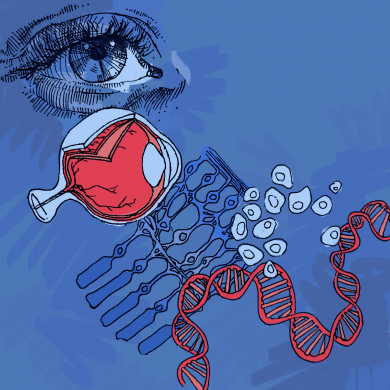BY JENNY CHIEM | BLOGGER | SQ ONLINE (2018-19)
Are you really even a pre-med student if you haven’t repeatedly binge-watched Grey’s Anatomy? It seems that almost every person you meet on campus is aspiring to be the next Meredith Grey– to be honest I can’t blame them, she’s a surgical goddess. In hopes of giving Shonda Rhimes the praise she deserves for creating such a masterpiece, in this blog series I will be examining the show’s medical, social and often times relatable topics. I’m stoked to finally have a good excuse to rewatch Grey’s Anatomy for probably the seventh time instead of doing homework, and to share my love for this legendary show.
Also, spoilers are fair game in these articles. Please don’t attack me for spilling too much tea.
“The First Cut is the Deepest” begins with Meredith looking for housemates– giving me flashbacks of trying to find my roommates when entering college. Except, instead of scrolling through people’s posts on the UCSD Class of 2022 Facebook page, Meredith tries looking for the perfect housemates at work. To relieve some stress from the housemate search, Meredith and George decide to go to the Pediatrics floor to look at newborn babies.
While admiring the babies, Meredith notices one of the babies crying intensely as his face turns blue, and quickly identifies a tet spell. Tet spells, which are most common in young infants two to four months old, are episodes of deep blue skin, nails, and lips appearing after crying or feeding, or when agitated. These episodes are caused by a rapid drop in the amount of oxygen in the blood.
Meredith realizes there must be an underlying problem as indicated by not just these observations, but also by a heart murmur. A heart murmur is a blowing, wooshing, or rasping sound heard during a heartbeat. This is caused by turbulent blood flow through the heart valves or near the heart. While often times harmless, some heart murmurs may indicate underlying heart problems, including valve calcification, endocarditis, cardiac shunts, or septal defects.
Heart murmurs occur when a valve does not close tightly and blood leaks backward, a process known as regurgitation. They can also happen when blood flows through a narrowed or stiff heart valve which restricts the blood flow, a process called stenosis. In less severe cases, heart murmurs can appear from exercise or fever, when blood flows through the valves faster than normal.
Dr. Burke eventually diagnoses the underlying condition as Tetralogy of Fallot with pulmonary atresia, and operates on the baby to treat the birth defect. Although we don’t follow through to the end of this surgery in the episode, we can assume with Dr. Burke’s record that the baby turned out just fine.
Down at the main floor of Seattle Grace, Izzie encounters a woman, Ms. Lu, who walks in soaked from the rain and only speaking Chinese. Despite the language barrier, Izzie manages to suture a wound on the woman’s arm.
Suturing is a process in which medical professionals use a needle attached to “thread” to stitch together an open wound on the skin or other tissues.
There are three phases of the healing process:
Step 1: Hemostasis and Inflammation: In hemostasis, bleeding is stopped by the intertwined activation of platelets and coagulation cascades which attract inflammatory cells. Inflammation aims to restore the integrity of damaged or threatened tissues.
Step 2: Fibroplasia – Fibroplasia is the process of synthesizing and secreting healing proteins to restore wounded tissue. During this phase, the size of the wound decreases as the wound contracts.
Step 3: Wound Maturation – In this final phase, matrix synthesis and degradation work together to remodel the wound. Tensile strength of the tissue increases over the healing process as collagen fibers cross-link.
After having her wound sutured, Ms. Lu brings Izzie to the parking lot where her daughter is hiding behind a trash can with a large gash across her forehead. The daughter refuses to go into the hospital to get her wound treated because she doesn’t have a green card.
A green card allows a person to live and work in the U.S. permanently. Patients, regardless of their legal status, are protected from U.S. Immigration and Customs Enforcement (ICE) by certain federal and state privacy laws. The Health Insurance Portability and Accountability Act (HIPAA) privacy rule prohibits health care providers from sharing patient information, including immigration status, without the patient’s consent. ICE and U.S. Customs and Border Protection (CBP), consider hospitals to be “sensitive locations,” meaning that immigration enforcement actions are to be avoided in such areas. Despite this general rule, immigration agents may still enter a hospital and question any person present, although these people may still exercise their right to remain silent.
Unable to convince the daughter to go into the hospital, Izzie eventually sneaks out supplies and sutures the wound outside in the rain. Ms. Lu and her daughter leave the hospital sutured and satisfied.
Throughout the episode, George leads the code team. Attempting to revive patients left and right, George suffers many losses despite his valiant efforts. George questions the learning aspect of being interns in the hospital, to which Izzie mentions the only thing she’s learning is “how not to sleep” – something I’ve spent many nights learning, staying up completing “busy work” assignments or contemplating my daunting future. Thankfully, just like how the interns all have each others’ backs, I get to tackle all the curveballs of college with the support of my friends these next four years. I encourage you all to start watching Grey’s Anatomy if you haven’t already. And if anyone is hosting viewing parties, please invite me.
Sources:
- https://my.clevelandclinic.org/health/articles/17067-heart-valves
- https://www.mayoclinic.org/diseases-conditions/heart-murmurs/symptoms-causes/syc-20373171
- https://medlineplus.gov/ency/article/003266.htm
- https://my.clevelandclinic.org/health/articles/17057-your-heart–blood-vessels
- https://www.mayoclinic.org/diseases-conditions/tetralogy-of-fallot/symptoms-causes/syc-20353477
- http://www.childrenshospital.org/conditions-and-treatments/conditions/t/tetralogy-of-fallot-with-pulmonary-atresia
- https://www.ncbi.nlm.nih.gov/pmc/articles/PMC2784434/
- https://www.bumc.bu.edu/surgery/training/technical-training/suturing-basics/
- https://www.nilc.org/issues/immigration-enforcement/healthcare-provider-and-patients-rights-imm-enf/

